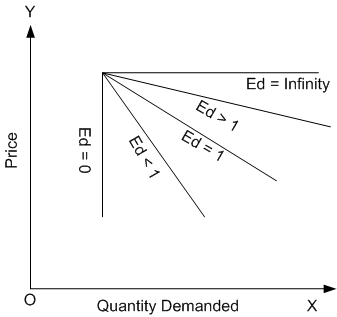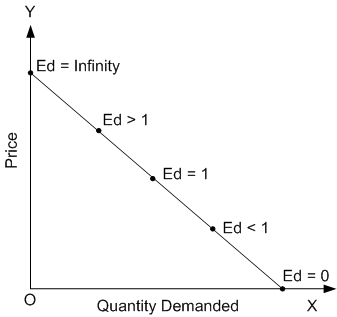CBSE
Class 10 Class 12
Elasticity of Demand: Price elasticity of demand is the responsiveness of demand to change in price. It is generally classified into five categories:

Methods of Measuring Elasticity of Demand:


From the figure, it is clear that the elasticity of demand is different at different points on a linear demand curve varying from 0 to infinity.
Relationship between Elasticity of demand & Total expenditure:
Factors affecting/determining the price elasticity of demand for a good: